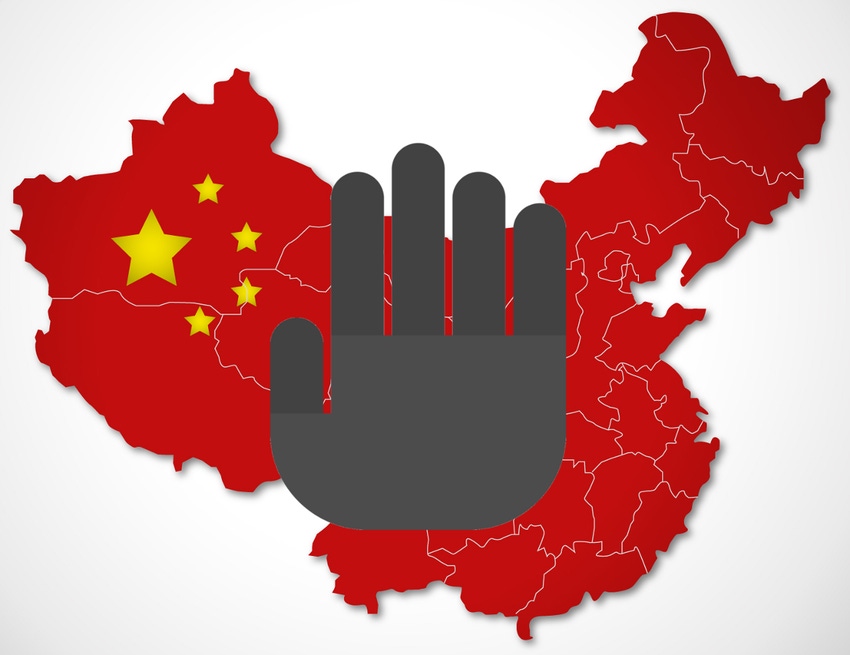3 steps brands can take in the wake of the China recyclables ban
November 17, 2017

This is a time of uncertainty for recycling in the U.S. But consumer packaged goods (CPG) companies and brands can seize this opportunity to revitalize recycling in the U.S. and make lemonade out of lemons.
When China announced in July that it would no longer be accepting PET, PE, PVC, PS* and “other” post-consumer recovered plastics, as well as mixed paper, many in the recycling industry predicted that the ban may have far-reaching effects on recycling in the United States.
China imports 53% of the world’s waste, much of which comes from the U.S., and has recently begun to crack down on smuggling and concerns about quality of waste imports with their Green Fence and National Sword initiatives. This new import ban, however, is driven more by a desire in China to improve environmental pollution and human health, as well as build domestic recycling capacity.
The ban will not take full effect until Dec. 31, 2017, so it remains to be seen exactly how much impact it will have on those recyclers who have relied on China as a viable end market for post-consumer recyclables. The Institute of Scrap Recycling Industries has already said that the ban will have a “devastating impact” on the global recycling sector, while other U.S. organizations, such as the Assn. of Plastic Recyclers (APR) and recycling and waste hauler Waste Management, express optimism that the ban may help improve the quality of recycling streams, and potentially incentivize the creation of greater domestic recycling capacity in the U.S.
In short, all anyone really knows is that this is a time of uncertainty for recycling in the U.S. But there are ways consumer packaged goods (CPG) companies and brands can seize this opportunity to revitalize the recycling industry in the U.S. and make lemonade out of lemons.
1. Communicate recyclability to consumers
One of the primary reasons why China wants to ban imports of post-consumer recyclables is because of the high rates of contamination. While some of this contamination can be attributed to improper sorting in material recovery facilities (MRFs), it’s also key to remember that much of that contamination comes from consumers improperly recycling materials in the first place. And no wonder—recycling instructions on packages can be confusing and conflicting, if they exist at all, and every community varies on what they will and won’t accept. Many consumers are confused about what they can and can’t recycle, and how to recycle it. In the wake of the ban, it will be critical for both municipalities and brands to increase recycling education and stress the importance of reducing contamination.
The How2Recycle program helps brands do just that—it’s the only U.S.-based standardized on-package recycling labeling system that can be applied to any and all material types.
The How2Recycle label allows brands to communicate to consumers what can be recycled, and if there are any special actions that the consumer needs to take before recycling, such as rinsing a jar of peanut butter or removing a sprayer with a metal spring from a plastic bottle. The Store Drop-off label lets consumers know which polyethylene (PE) bags, wraps and films can be taken to collection points at local stores to be recycled, keeping them out of curbside bins where the films make their way to MRFs and get tangled in the equipment. These instructions help empower consumers to reduce contamination, as does the Not Yet Recycled label, which tells consumers exactly what they should not be putting in their curbside bin, therefore cutting down contamination.
2. Design packaging for recyclability
In addition to educating consumers, brands can reduce contamination by designing packages for optimum recyclability. If more materials, including lower-quality materials, are staying in the U.S. rather than being shipped abroad, the end markets for those materials may be able to demand higher quality.
The Assn. of Plastic Recyclers (APR) provides guidance to its members to help them optimize the recyclability of their plastic packaging via the APR Design Guide for Plastics Recyclability, which details everything from preferred labels, closures, inks, additives and more. How2Recycle has worked with APR to synchronize its feedback on recyclability, and is launching a new online platform where members can not only request How2Recycle labels for their packages, but they can also track, measure and improve the recyclability of their packaging portfolio.
3. Commit to using PCR
The most critical and impactful step companies can take in light of the China ban is to commit to using post-consumer resin (PCR) wherever possible. Using PCR stimulates demand for the materials that are impacted by the ban, creating vital end markets that make the domestic recycling stream viable. Without end markets for these materials, it won’t matter if the volume and quality of the collected materials increases because they won’t be effectively recovered. Stronger end markets will also allow the U.S. recycling industry to build capacity and recover more of the materials that would have previously been shipped to China.
There is already an initiative for companies that want to commit to increasing their use of PCR—APR announced its APR Recycling Demand Champion Campaign on Oct. 18, 2017, at its fall meeting in Pittsburg. The campaign asks companies to commit to increasing their use of PCR in “Work In Progress” items used in manufacturing such as crates, pallets, totes, drums and trash cans. So far, Berry Global, Campbell’s Soup, Coca-Cola North America, Envision Plastics, Keurig Green Mountain, KW Plastics, Merlin Plastics, Plastipak/Clean Tech, Procter & Gamble and Target have all joined the campaign, and APR anticipates that number will grow.
The Chinese import ban may pose some major challenges for the recycling sector globally, but it also gives brands and CPG companies an opportunity to take the lead on recycling. Effective communication to consumers will be crucial when it comes to mitigating the effects of the ban, not only to reduce contamination, but to impart the importance of choosing items and packages made from PCR to keep recycling viable. This will allow brands to build sustainability stories that help connect with consumers in a positive way and increase brand loyalty.
* PET = polyethylene terephthalate; PE = polyethylene; PVC = polyvinyl chloride; PS = polystyrene
Images above designed by Freepik: China map; Hand

Jessica Edington joined GreenBlue in May 2017 as a project associate for the Sustainable Packaging Coalition’s How2Recycle program. Previously, she worked as a consultant for Green Strategies in Washington, DC, where she assisted corporate clients with developing strategies to engage consumers, business partners and other stakeholders in improving the environmental impact of their products and services. Edington also has experience in environmental education and sustainable agriculture, and worked on a residential solar campaign in the Hudson Valley. Her dual passions are writing and the environment, and she received her B.A. in English with a minor in Environmental Science and Policy from the College of William & Mary.
********************************************************************************
A magic kingdom of packaging solutions! For packaging engineers, executives and designers—WestPack 2018 (Feb. 6-8; Anaheim, CA) delivers leading technologies, free educational presentations, hands-on demonstrations, exceptional networking opportunities and expert-led Innovation Tours. Register now!
About the Author(s)
You May Also Like


